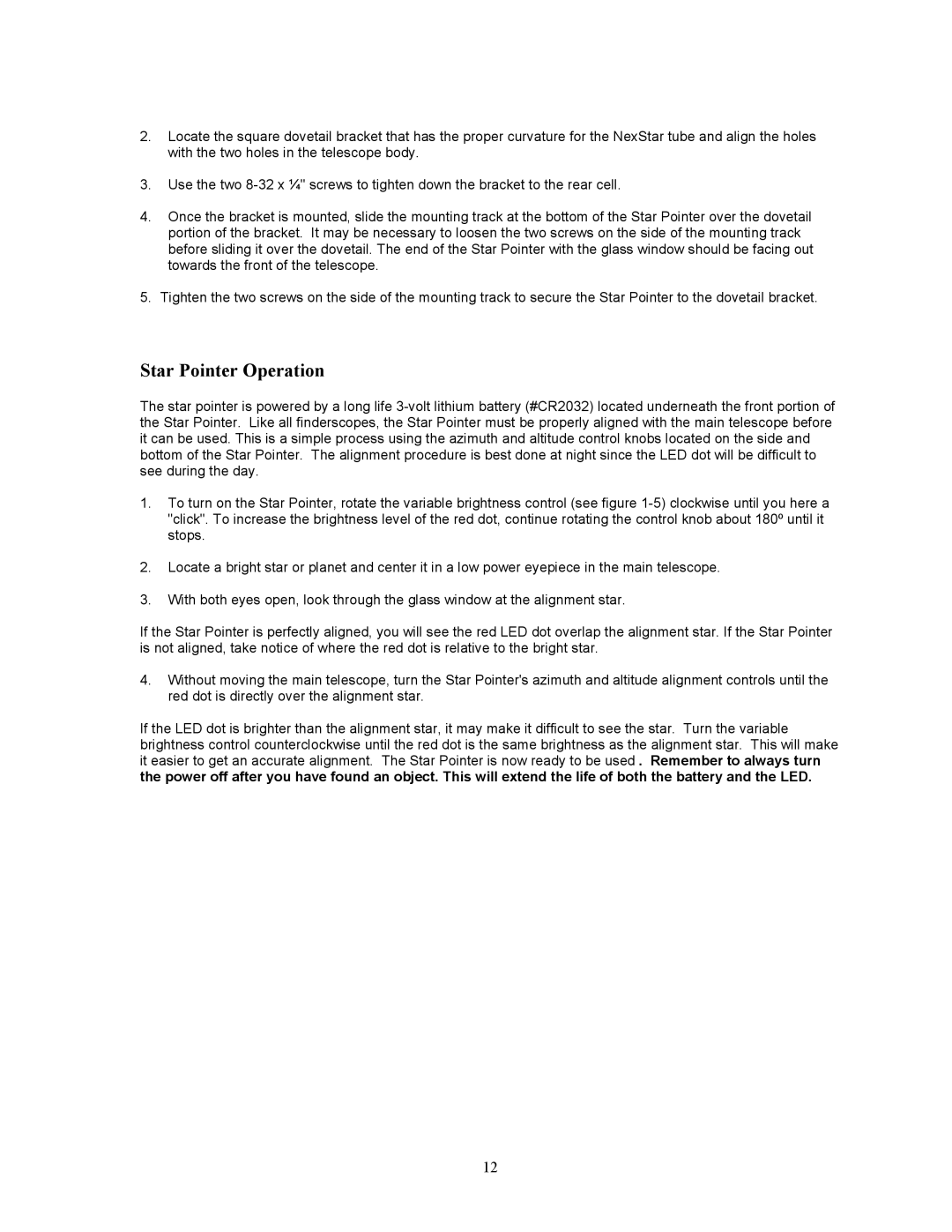2.Locate the square dovetail bracket that has the proper curvature for the NexStar tube and align the holes with the two holes in the telescope body.
3.Use the two
4.Once the bracket is mounted, slide the mounting track at the bottom of the Star Pointer over the dovetail portion of the bracket. It may be necessary to loosen the two screws on the side of the mounting track before sliding it over the dovetail. The end of the Star Pointer with the glass window should be facing out towards the front of the telescope.
5.Tighten the two screws on the side of the mounting track to secure the Star Pointer to the dovetail bracket.
Star Pointer Operation
The star pointer is powered by a long life
1.To turn on the Star Pointer, rotate the variable brightness control (see figure
2.Locate a bright star or planet and center it in a low power eyepiece in the main telescope.
3.With both eyes open, look through the glass window at the alignment star.
If the Star Pointer is perfectly aligned, you will see the red LED dot overlap the alignment star. If the Star Pointer is not aligned, take notice of where the red dot is relative to the bright star.
4.Without moving the main telescope, turn the Star Pointer's azimuth and altitude alignment controls until the red dot is directly over the alignment star.
If the LED dot is brighter than the alignment star, it may make it difficult to see the star. Turn the variable brightness control counterclockwise until the red dot is the same brightness as the alignment star. This will make it easier to get an accurate alignment. The Star Pointer is now ready to be used . Remember to always turn the power off after you have found an object. This will extend the life of both the battery and the LED.
12
